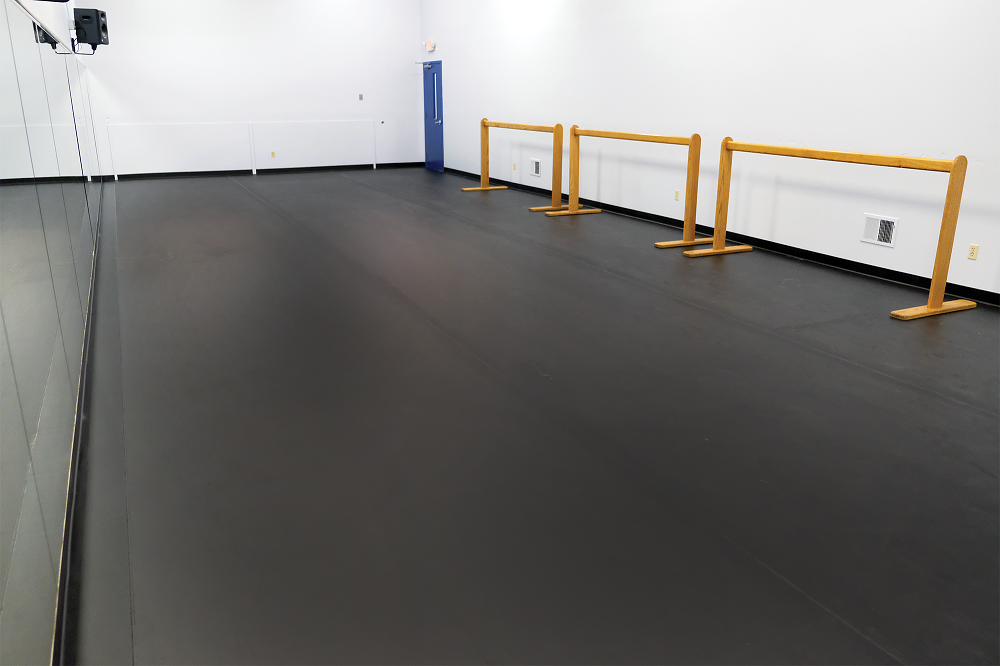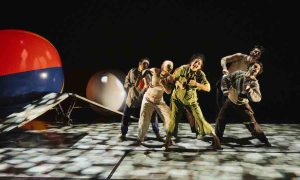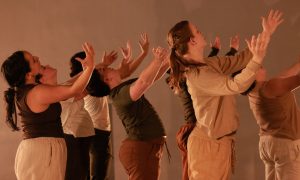Whether you’re a dance teacher or studio owner looking for the perfect studio floor, or a parent or dancer seeking an at-home practice space, safety should always come first. Dancing on a floor that’s not fit for purpose invites incorrect technique and injury, which are easily avoided. Stagestep Flooring Solutions have some advice on what makes a dance floor safe and how to keep it that way.
Choose the right surface
There are three elements to a safe floor:
1. Shock Absorbency
A floating wood subfloor or a dual density foam-backed flooring system is essential. You jump (small or large) hundreds of times during class. Every time you hit the floor gravity hits your body weight thrice over which leads to fatigue and injury. A shock absorbing subfloor reduces that harmful impact.
2. Lateral Foot Support
It is important to have a flooring system that supports you when you balance. You can’t dance on a trampoline because it does not have any lateral (sideways) foot support. Carpet is not an ideal surface for the same reason. You need a floor that supports your foot and prevents unnecessary falls.
3. Surface
The correct coefficient of friction, which you might call slippery or sticky. You can also think of it as fast or slow. Ballet dancers usually like slower floors, while jazz dancers and tappers mostly prefer faster floors. The wrong floor surface can make you feel like you are dancing on an ice skating rink or stuck in mud. Both are uncomfortable and can be dangerous.
There are a number of components to consider before choosing the proper floor. Make sure you pick the type that will keep you safe, and ask questions. What will this cost? Where will it go? How big a space do I need? Is the space going to be used for other purposes? Is it easy to install and can it easily be removed if necessary? Whether outfitting your studio or shopping for an at-home space, you need to cover all your bases.
If you are considering a floor for practicing at home, small personal practice boards and mats may do the trick. It is also possible to have a professional dance studio floor in your home, with portable mirrors and barres to complete the project. It depends on your budget and what you want to accomplish.
Without proper dance flooring in place wherever you’re dancing, you are inviting injury. A safe environment maximizes performance potential.
Beware of Shower Pan Liners!
The internet is full of advice for dance studio owners, some of it good, some of it not. One idea you might have come across is the use of a shower pan liner as a dance floor. It looks like a dance floor and in some cases it is labelled PVC, which is the basic material used in professional dance floors. It costs a lot less and therefore might seem like a budget-friendly alternative.
In fact, all shower pan liner is made from Chlorinated Polyethylene, which can expose you to DEHP, DINP, Antimony Trioxide and Vinyl Chloride. The state of California has advised that these chemicals can cause birth defects, reproductive harm, and cancer.
Manufacturers of shower pan liner advise that the product only maintains its integrity when installed in a damp, moist environment (the typical shower pan) away from the effects of sunlight and ozone. Under no circumstances should vinyl shower pan liner be used where there is direct exposure to the elements.
Shower pan liner is safe when used for its intent; in a shower pan covered with tile. Both students and teachers are at risk when using this product as a dance floor. Misusing shower pan liner can make you liable for damages, and it simply is not worth the long term health risks. The cost of a professional floor is always worth it when it comes to safety.
Fix a slippery floor
There are many solutions out there for a slippery floor, but they don’t all work. Myths, inexperience and lack of expertise can result in failure or in making the problem worse. With almost 50 years of experience in the theatrical flooring marketplace, Stagestep Flooring Solutions have dealt with just about every problem you could have.
Flooring types
If you purchased laminate, engineered wood or bamboo flooring you are likely to have slip issues. This is due, in part, to a factory finish applied to the floor that is not appropriate for most dance styles. Many people buy these products because they look nice and are inexpensive, but the problem with factory finishes is that they are next to impossible to remove. Most stripping products will not do the trick and sanding is not an option because it will destroy the surface. Slip NoMor will often work if it is compatible with the factory finish, but the only way to find out is to try it. You can use a version of Floor Shield that will bond with most floors. Otherwise, the only answer is to roll out a marley type floor on top of the inherently slippery surface.
Oil and perspiration
Sometimes the floor itself isn’t the problem. Perspiration and body lotions contain oil and if you wash your floor with water alone it can make it worse. Water and oil do not mix so all you are doing is spreading the problem all over your floor. The solution is to use a detergent or degreaser with water to dissolve and clean up the oil residue, which you can find at janitorial supply outlets or from a specialist dance floor company like us at Stagestep. Cleaning your floors with supermarket detergents is not recommended, as they usually have additives that leave your floor shiny.
Products to avoid
Using rosin is another mistake dancers make, especially on vinyl floors. Rosin is pine tar which hardens and becomes smoothed out by friction with dance shoes. This results in slippery spots that are hard to remove. You should never use rosin on marley type floors.
Similarly, the following should never be used on your dance floor because they break down and dissolve the vinyl floor over time: alcohol, bleach, ammonia, acetone, vinegar, coke, steel wool and solvent, and all abrasive cleaning products.
The weather
Humidity and temperature fluctuations are often responsible for slippery studio floors. Very high humidity and very low humidity can be the problem, so keep the studio humidity around 50% with either a dehumidifier or humidifier depending on your problem. Temperature variation also plays a major role. Warm air holds moisture and cool air dumps moisture on your floor which combines with body oils and dirt to create a slippery top layer. Dry mop the floor, clean it with an appropriate detergent and maintain a balance of temperature and humidity to fix the issue.
Slippery wood
Environmental issues aside, slippery wood floors are usually because of the finish. Industry standards are not dance standards so make sure the finish you use is non-slip for the type of dance you are doing on the floor. Pointe work is especially demanding when it comes to non-slip. Slip NoMor gets better results than rosin, is easy to clean up and is applied uniformly to the entire floor. Remember that wood is a living thing. It will absorb moisture and expand and release moisture and contract. Control the humidity and you will have a consistent wood floor.
External dirt
Dirt, grease and foreign objects are brought into the studio on the bottom of people’s shoes. Put floor mats with rubber blades and brushes at your main entrance and at the doorway into the studio. Clear them once a week and save time and money and prevent a slippery floor.
If you need help choosing the right dance floor or making your studio a safer place to be, visit Stagestep Flooring Solutions at www.stagestep.com.
Don’t miss out – Dance Informa readers can get an amazing 15% off their total order price using the code INFORMA15 until 31st July 2019. Offer excludes pre-cut flooring.









